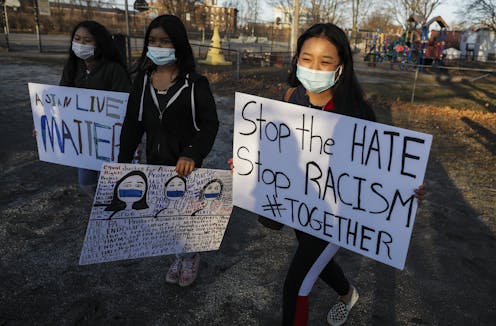Education is vital for getting ahead in life and is key in opening new opportunities for a person. Some opportunities include the chance to attend better universities, which in turn can lead to better paying jobs that also have better benefits.
In an article posted by americanprogress.org, an article in which I recommend everyone reads (https://www.americanprogress.org/issues/education-k-12/news/2020/07/08/487386/fighting-systemic-racism-k-12-education-helping-allies-move-keyboard-school-board/), they highlighted how African Americans were facing a systemic injustice in the education system. In that article they discussed three ways in which people can help combat this systemic injustice which was to advocate for equitable funding, advocate for less policing and surveillance of students, and to advocate to end de-facto segregation through school and district boundaries. In this entry I am going to focus primarily on advocating for less policing and surveillance of students, but you can read about the other two with the link above.
Following the deadly school shootings that have been going on across the country in recent years there has an increased focus on preventing gun violence in schools. This focus has led to an increase in policing and surveillance in schools, yet there is evidence that this does not help address the threat of gun violence. Instead, this increase in policing has had different effects. In fact, “According to data from the U.S. Department of Education’s Office for Civil Rights, Black, Hispanic male, and American Indian students face higher rates of school disciplinary consequences such as suspension and expulsion than white students, and they are also subject to more interactions with police in schools in the form of contraband sweeps, interrogations, physical restraints, and arrests. Black students are also more likely to be subjected to social media surveillance and the use of biased artificial intelligence and facial recognition technology”.
Black students are also more likely to be subjected to social media surveillance and the use of biased artificial intelligence and facial recognition technology”.
This data helps illustrate that this increase in police and surveillance is really causing more harm than it is good. Although it is definitely important that the issues regarding school shootings needs to be addressed, increasing police and surveillance is not the answer. In fact, “legislatures in 26 states allocated nearly $960 million for security upgrades and the addition of police officers to school campuses”. This is a tremendous amount of money that could be going into other areas that could not only correct the systemic injustices that are going on in our education system but could also improve the mental health of all school children in general. As stated in the article, “Approximately 1.7 million students attend schools with police officers but no counselors; 3 million students attend schools with police but no nurses; 6 million students attend schools with police but no psychologist; and 10 million students attend schools with police but no social workers”. This statistic illustrates another area that this money could go to where it could be beneficial to all school children: nurses and mental health staff.
In a way this situation reminds me of Chimamanda Ngozi Adichie’s concept of a single story. This is because if you looked at this increase in surveillance and policing of schools from the perspective of someone who does not experience this injustice, there seems to be no downside to this increase. It is only after you consider the perspective of people such as African Americans, Hispanics, and American Indians that one can see that this increase is causing more harm than it is good.
In order for this systemic injustice to be corrected, and for the mental health of children to improve, people must start advocating more for this funding to go elsewhere rather than to policing and surveillance. People must start advocating for this money to go toward increasing mental health staff such as counselors or psychologists which are often nonexistent at certain schools. In doing this it will correct this systemic injustice in which certain people are forced to go to school in fear of being unfairly mistreated, and also improves the overall mental health of students which in turn could also lead to less school shootings as well.
Works Cited
Chatterji, Roby. “Fighting Systemic Racism in K-12 Education: Helping Allies Move From the Keyboard to the School Board.” Center for American Progress, 24 Sept. 2020, www.americanprogress.org/issues/education-k-12/news/2020/07/08/487386/fighting-systemic-racism-k-12-education-helping-allies-move-keyboard-school-board/.
“Data and Statistics on Children’s Mental Health.” Centers for Disease Control and Prevention, Centers for Disease Control and Prevention, 15 June 2020, www.cdc.gov/childrensmentalhealth/data.html.












